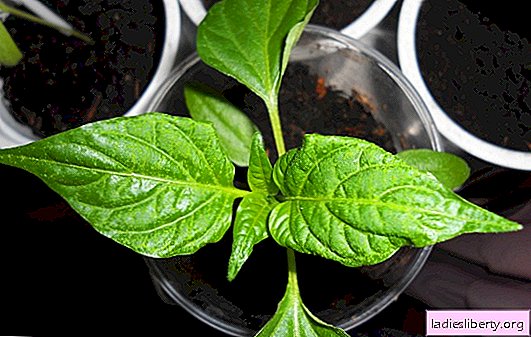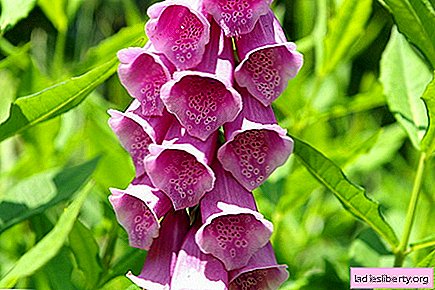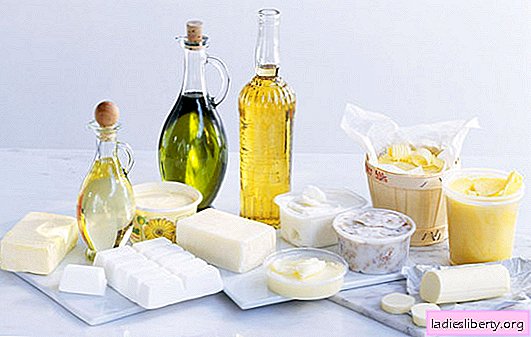
Preparation for the garden period begins even before the onset of warm days. To grow a normal crop, you need to do a lot of hard work - mix the soil mixture and prepare boxes for seedlings, select the seeds of the appropriate variety, wait for the seedlings to appear, and then take care of them regularly.
Sometimes you can’t get a good crop, due to pests or illness. In order not to ruin the tender seedlings, it will need to be saved immediately when a problem is discovered.
Causes of curl and yellowing of pepper seedlings
Several problems can be distinguished, due to which the leaves of pepper seedlings fall and curl:
• Yellowing of leaf blades located below, with a gradual transition of yellowness leaves in the upper part of the plant, can occur due to lack of nitrogen. Extra nutrition can help the pepper, for this they bring one granule of Azogran under each bush;
• This may be due to dying off, or underdevelopment of the root system. Often this happens due to the fact that the roots of closely sown seedlings are intertwined. As a result, the possibility of absorption of nutrients by roots substantially worsens; after a while, parts of the roots begin to die. To solve the problem of seedlings, you need to transplant, well spreading the roots during transplantation, after which the plant will begin to develop rapidly;
• A problem may appear, the fault of various pests damaging the roots;
• The cause of yellowing of the leaves in pepper seedlings may be sharp cooling. Because of this, with a sharp decrease in night temperature (below 14 degrees) - the leaf blades can begin to fade, curl and gradually turn yellow.
The most harmless cause of twisting can be called too rapid elongation of the central vein of the leaf plate, compared with the development of the sheet itself.

Gardeners, growing tomato seedlings, also often encounter this trouble. The reason in both cases may be a lack of heat and sunlight. There is practically nothing to do here, gradually everything will fall into place itself. If the seedlings of pepper are in the room, then a slight increase in temperature and additional highlighting of the seedlings will help.
Often, only the upper leaf blades in seedlings begin to bend. This will not affect the subsequent development of seedlings, and the number of fruits. After some time, the proportions of the leaves will become completely normal, and you will get healthy and strong seedlings. If color changes are noticeable mainly on the lower leaves, then there is no reason to worry, this is a natural process for plants.
The effect of the soil mixture on seedlings of pepper
To create comfortable conditions for the development of pepper seedlings, you need to add manure to the soil mixture and cover the plants with lutrusil at night. Use ashes to feed seedlings, which increases resistance to low temperature, drought, pests and diseases.
Wood ash is poured under each bush, on which traces of the disease are noticeable, so that it covers the soil around the plant without passes with a layer of 3 mm. Immediately after this, moisten the soil well. This is ideal for followers of natural farming and for those who do not want to feed their vegetables with chemical fertilizers.
If in the soil on the beds there are not enough chemical elements necessary for the seedlings of pepper for normal development, then it will suffer greatly.

The lack of nutrients is one of the reasons that leaves of pepper seedlings fall and curl. Irrigation alone is not enough for the proper development of seedlings. The reasons may be different, the lack of such elements as - iron, nitrogen, potassium or various trace elements. You can quickly check what is missing if you carry out foliar feeding of seedlings with one of the fertilizers. This is a quick solution to the problem, if after 1-2 days you notice an improvement on the young leaves, then the element which is missing is found.
In addition, among gardeners, it is popular to use one of the complex fertilizers for urgent foliar feeding. The composition for processing seedlings is prepared, as well as for conventional top dressing, only the dose of the active substance is reduced by 2-3 times.
Attention! Pepper will absorb chemical elements very quickly, but you should not immediately wait for the result. In addition, one should not expect that all yellowed parts of the leaves will regain their original color. Separate parts of plants will even fall; they will need to be removed.
In the treatment of seedlings, in which the leaves are curled, it is useful to feed it with bird droppings or mullein infusion. They have all the substances necessary for the development of seedlings, but the effect will be noticeable later than when sprayed with a fertilizer solution.
Pests and diseases of pepper seedlings
When plants are infected with pests such as aphids and spider mites, the leaves also curl and additionally:
• On the leaves, yellow spots appear, or they turn yellow over the entire surface;
• A thin cobweb becomes visible between the leaves;
• Holes may form on curled leaves;
• A white coating appears on the surface of the leaf blade.
You can destroy uninvited guests at seedlings with folk remedies, so you will not harm the future crop. There are several proven recipes:
1. Onion husk tincture. In 1 liter of water, pour 1 cup of onion husks, we all insist for a day and spray pepper seedlings 1 time every 5 days;
2. Infusion of dandelion and garlic. We take 1 cup of ground garlic and onion, pour 1 tablespoon into the mixture. honey, all bred in a bucket of water. The mixture should be infused for 3 hours, after which you can spray the plants;
3. Potassium permanganate. To quickly destroy harmful larvae wound up in the soil mixture, you can use a solution of manganese. The composition for processing the soil is made very weak, it is necessary that the liquid becomes a pale pink.

The soil under seedlings is watered with potassium permanganate several times until the leaves of the pepper plants look better.
Of course, it is advisable to disinfect the soil in advance, even before sowing the seeds. Pretreatment is carried out as follows - 14 days before sowing seeds, the soil is heated, or watered with hot water, 2 days before sowing.
The twisting of leaves leads to the appearance of larvae of pests that live in the soil and eat up the roots. He will cope with them, manganese will help. In addition, during their development in the soil, insects lay eggs there. The latter can harm the roots of sweet pepper. For this reason, in the autumn, after a full harvest from the site, it is imperative to disinfect the soil. So you can destroy almost all the larvae that can harm your seedlings, or destroy the crop.
If it was not possible to get rid of the invasion by folk methods, then to destroy pests, you will have to use insecticides.











